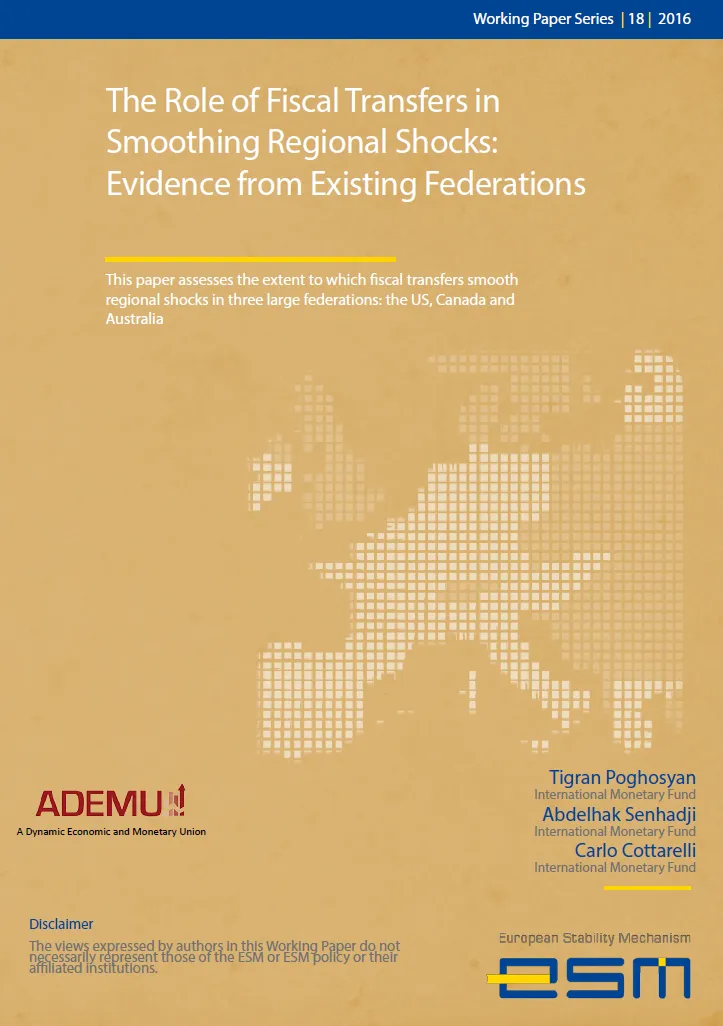The Role of Fiscal Transfers in Smoothing Regional Shocks: Evidence from Existing Federations

Download PDF: Working Paper 18
This paper assesses the extent to which fiscal transfers smooth regional shocks in three large federations: the US, Canada and Australia
Authors: Tigran Poghosyan, Abdelhak Senhadji and Carlo Cottarelli | International Monetary Fund
Paper presented at ADEMU (A Dynamic Economic and Monetary Union) conference co-organised by the ESM in May 2016
Abstract:
This paper assesses the extent to which fiscal transfers smooth regional shocks in three large federations: the US, Canada and Australia. We find that fiscal transfers offset 4-11 percent of idiosyncratic shocks (risk-sharing) and 13-24 percent of permanent shocks (redistribution). This fiscal insurance largely operates through automatic stabilizers embedded in a central budget primarily through federal taxes and transfers to individuals, rather than transfers from the central government to state budgets. These results have implications for the design of fiscal risk-sharing mechanisms in the euro area.
Disclaimer: This Working Paper should not be reported as representing the views of the ESM. The views expressed in this Working Paper are those of the author(s) and do not necessarily represent those of the ESM or ESM policy. No responsibility or liability is accepted by the ESM in relation to the accuracy or completeness of the information, including any data sets, presented in this Working Paper.
JEL codes: E6, C4, H6